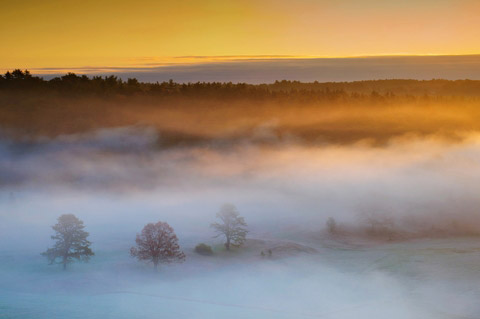The Encyclopedia of Fall: Q is for Quabbin
The creation of the Quabbin Reservoir in central Massachusetts came with a cost: The sites of four communities in the Swift River Valley were drowned out of existence when it was built in the 1930s. In their place came two huge earthen dams and a new body of fresh drinking water for metro-Boston residents: a […]

The creation of the Quabbin Reservoir in central Massachusetts came with a cost: The sites of four communities in the Swift River Valley were drowned out of existence when it was built in the 1930s. In their place came two huge earthen dams and a new body of fresh drinking water for metro-Boston residents: a reservoir capable of holding 412 billion gallons. But what was originally an engineering marvel is now a place of wonder for nature lovers, spanning 39 square miles, with 181 miles of shoreline. In the decades since Quabbin was created, the valley has undergone a slow transformation back to a place without mankind, a place of deer and muskrats, hemlocks and hardwoods. Fall, especially, brings a brilliant palette of color, and solitude. You may visit, but you may no longer stay here. And that’s part of Quabbin’s beauty. For more on hiking near the reservoir, as well as the area’s history, go to: mass.gov/dcr/parks/central/quabbin.htm


